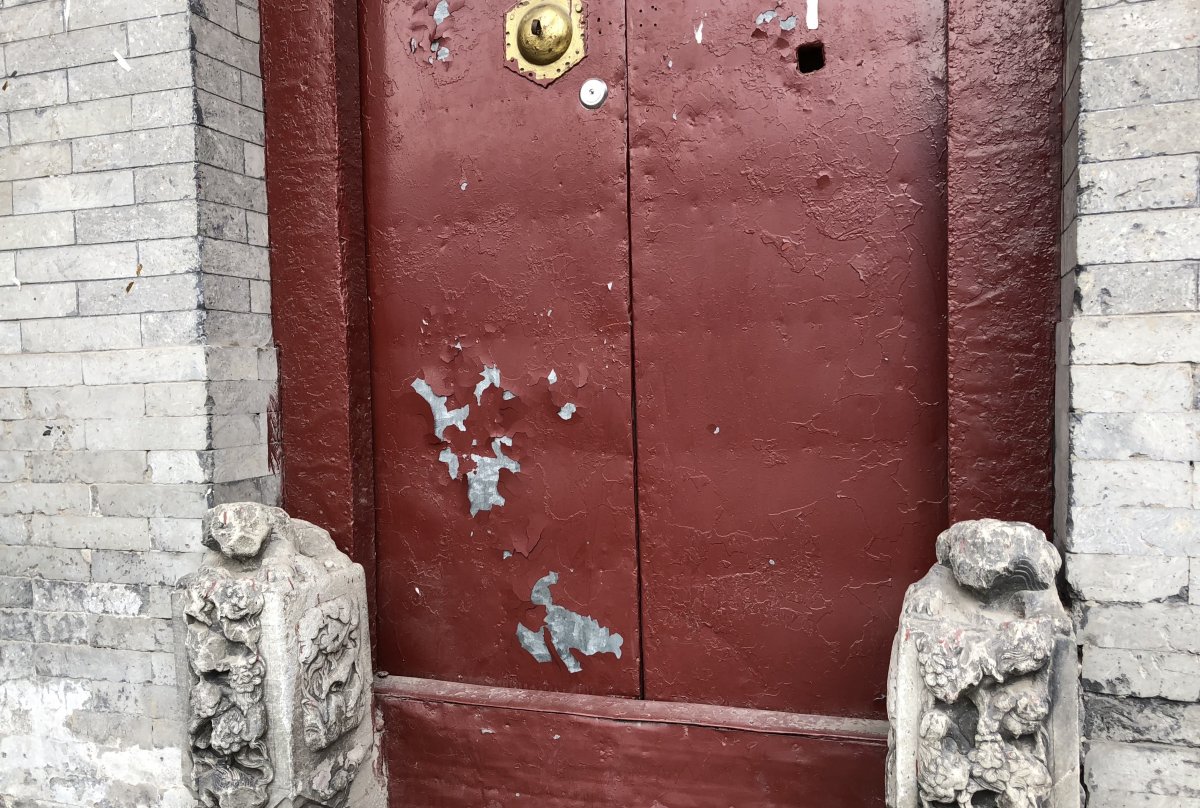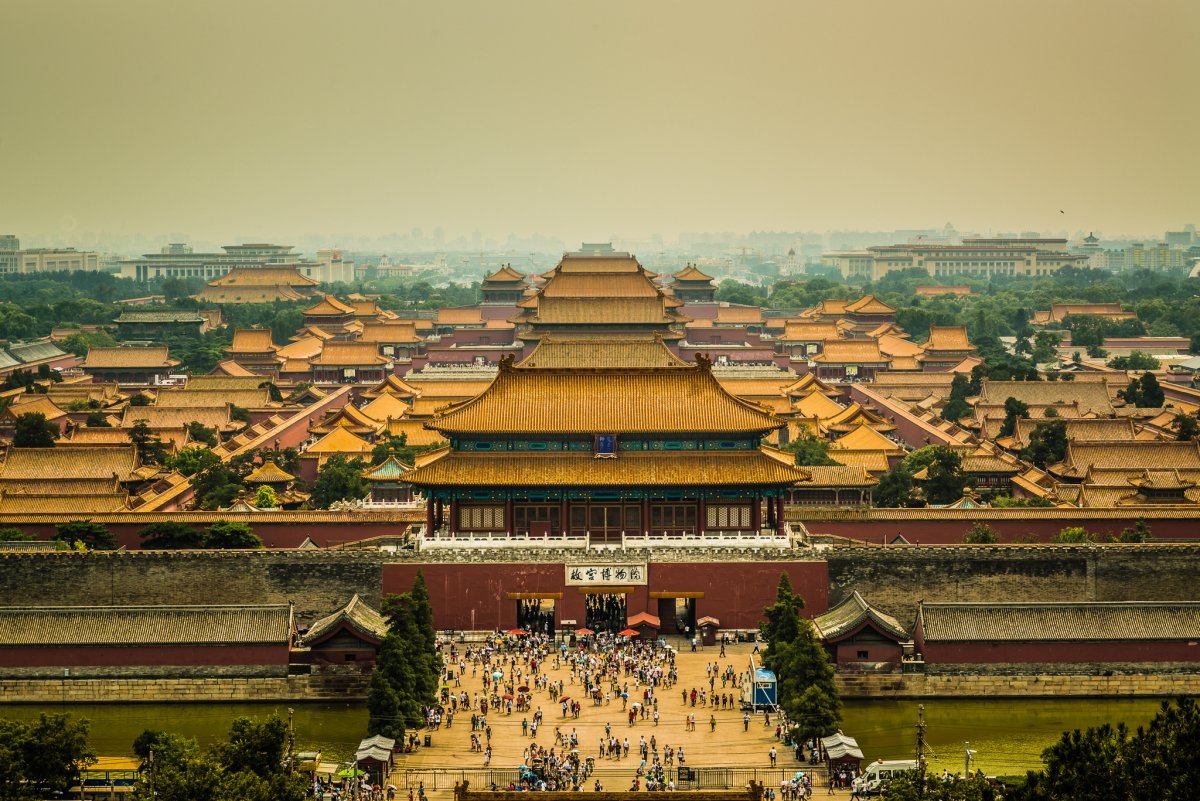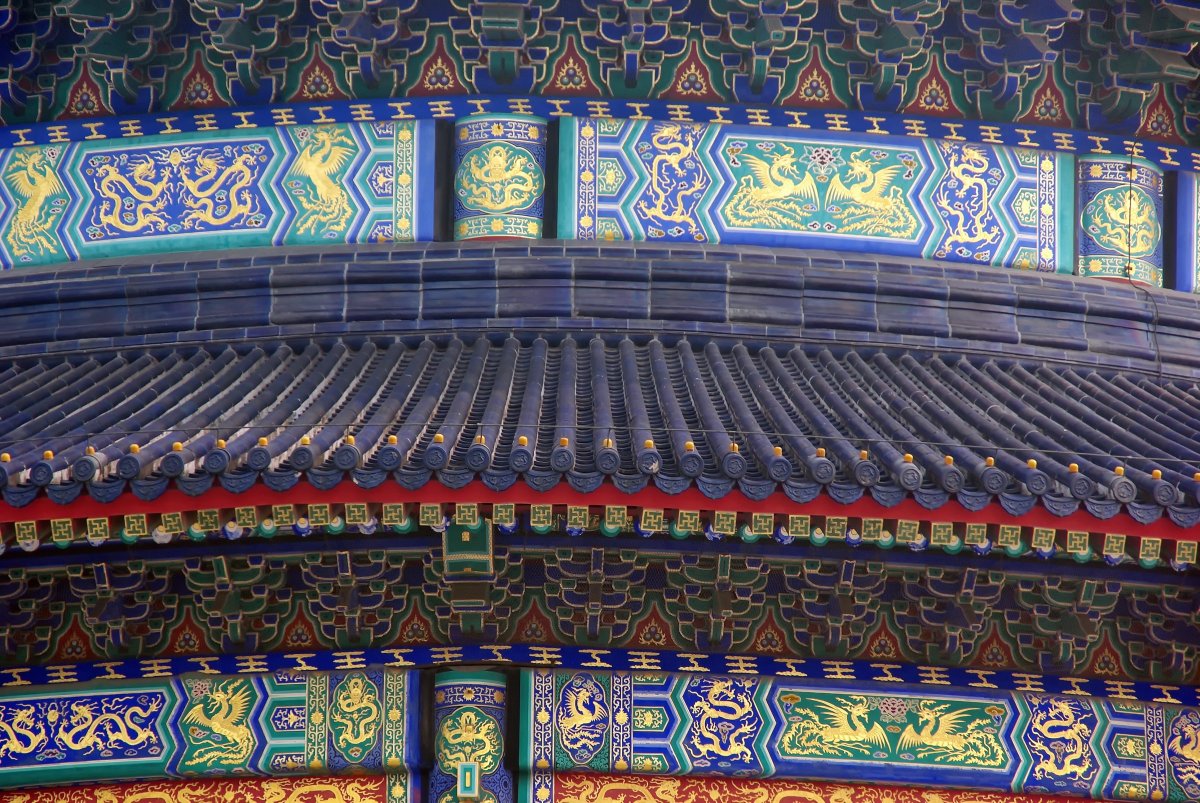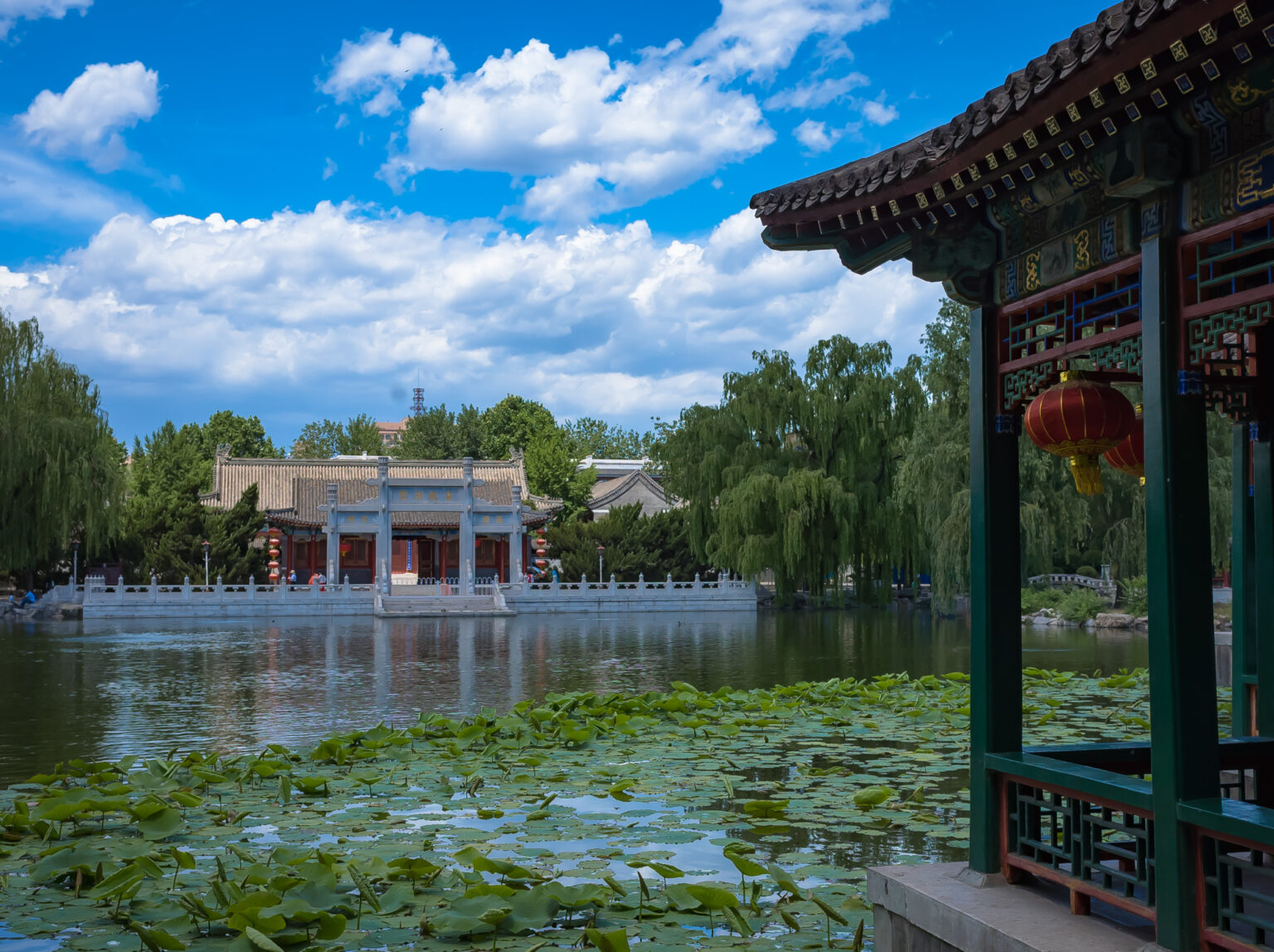
It sometimes seems like the dominant color in Beijing is “Socialist Taupe.” The streets. The bricks. The roads. Getting away from the gray and the beige is hard.

That wasn’t always the case. In imperial times, builders and architects relied on five colors to add life to their creations: red, yellow, blue, white and (yes) gray.
These colors were not just aesthetic choices; each was associated with a complex schematic that involved everything from astrology and metaphysics to food and medicine: 五行 wǔxíng. This concept sought to explain all phenomena as an interaction between five different elements: metal, wood, water, fire and earth. Later, each element became associated with different colors, which then became the dominant palette in Chinese architecture.
There are reports that the Beijing Municipal Government wants to create a standardized color palette for buildings and even signage in Beijing, restricting new construction and historical renovations to (you guessed it) red, yellow, blue, white and gray.
Chinese-Canadian author and scholar Dr. Donia Zhang, who serves as editor-in-chief of the Journal of Chinese Architecture and Urbanism explains: “Green, red, white, gray and black have historically been associated with vernacular Chinese architecture, such as Beijing siheyuan (courtyard houses). The exterior walls of Beijing courtyard houses were traditionally constructed of gray bricks, with structural columns often painted in vermilion red – the color of fire and blood, symbolizing good fortune and prosperity – and window mullions painted in green – the color of plants and vegetation, denoting living and growing.”
Red
Red has long been important in Chinese symbolism (Mao certainly lucked out with his choice of revolutionary hue). Traditionally, red represented warmth and the highest amount of yang – as in yin-yang – energy. The association of red with positive mojo and good fortune is why the color red is prominent in weddings, the New Year, and other important celebrations. Think of the 红包 hóngbāo “red envelopes” given out each year to children at the Lunar New Year or posted by the drunk guy trolling your rando WeChat group at 2am.

Yellow
Yellow was another prominent color in old Beijing, and it was associated primarily with the emperor. Connected to the element of earth, yellow represented the very foundations of Chinese civilization in antiquity. The Yellow Emperor is the mythological forefather of the Chinese nation, while archaeologists trace the earliest examples of a specifically Chinese civilization to the Yellow River Basin. The Yellow River itself derives its name from the color of the water, once the river fills with the loose loess soil of central China.
In Beijing, yellow figures prominently in the Forbidden City and other examples of imperial architecture. The rooftops of most imperial palaces (and the Confucian Temple) are made of glazed yellow tiles. Yellow was also the color of the imperial robes, and the interior walls of many palace rooms were washed with yellow clay from Hebei province. Yellow was so associated with the emperor that by court decree, the color could only be used for imperial palaces, temples, and tombs.

Not all buildings in the Forbidden City feature the famous yellow tiles. The Hall of Literary Splendor, 文华殿 wénhuá diàn, on the eastern side of the Forbidden City, has a building, formerly the imperial library, with a black roof. As with other colors, black has an elemental connection – in this case, water – a useful element for the protection of rare books in a palace where fire was a perennial problem.
Blue
The color blue symbolized heaven and heavenly blessings, with the best example being the deep cobalt tiles adorning the rooftops of structures at the Temple of Heaven. This wasn’t always the case. When the Temple of Heaven was first laid out in the Ming era (1368-1644), most of the temple structures had green rooftops. This was changed during renovations ordered by the Qianlong Emperor in the 18th century. In fact, the famous triple-tiered Hall of Prayer for Good Harvests 祈年殿 qínián diàn was once a tri-color mash-up of symbolic colors. The first tier was green, symbolizing the earth, the second tier yellow for the emperor, and only the upper level, representing heaven, had the now characteristic blue tiles. When the structure was remodeled by the Qianlong Emperor (and then again when it was rebuilt following an 1889 fire), all the tiers were tiled a uniform blue.

In regards to the municipal plan to restrict future building development to five colors, Dr. Zhang believes the plan has merit. “In Daoist classic Dao De Jing, the Chinese sage Laozi observed that ‘Colors blind the eye…’ (verse 12); he advised that too many colors are not good for human vision. In architectural education, we were also suggested that no more than three main colors [were] to be used for a facade design; otherwise, it would look too busy and chaotic. This philosophical view and artistic principle may help explain Beijing Municipal Government’s recent decision on the primary color palette for historical reconstruction and development in Beijing to include green, red, yellow, white, and gray.”
Whether the regulation is enacted or not, it’s nice to know there’s more to the ‘Jing than beige.
Photos: Uni You, Jeremiah Jenne






